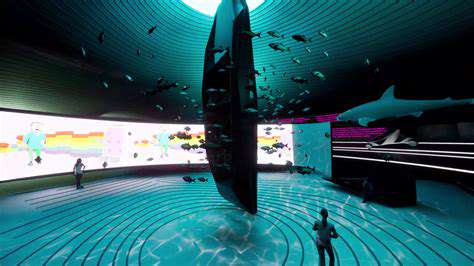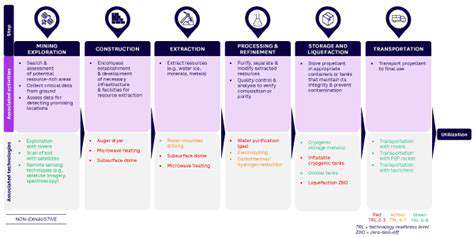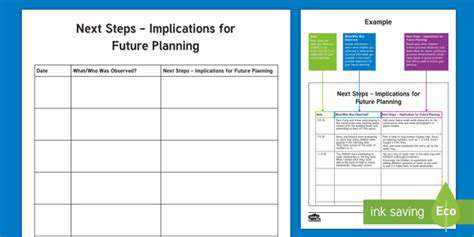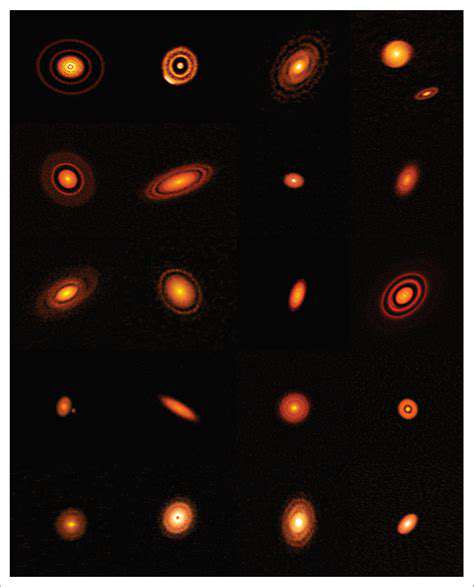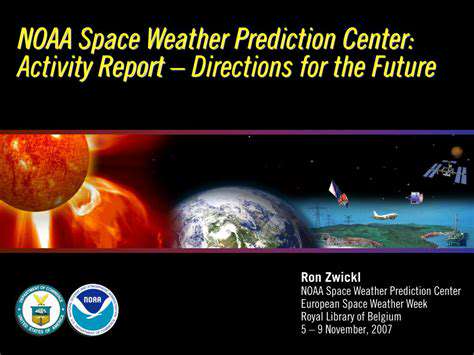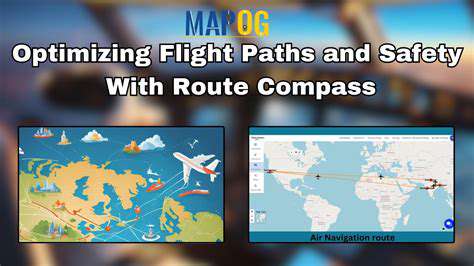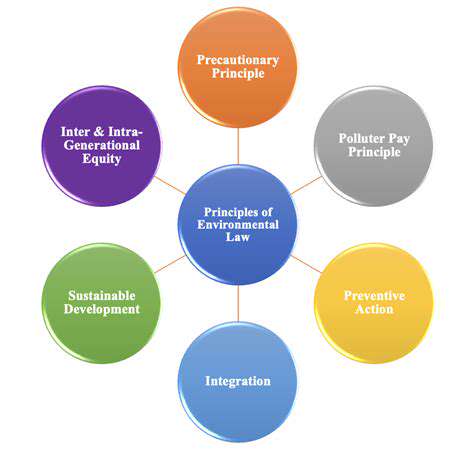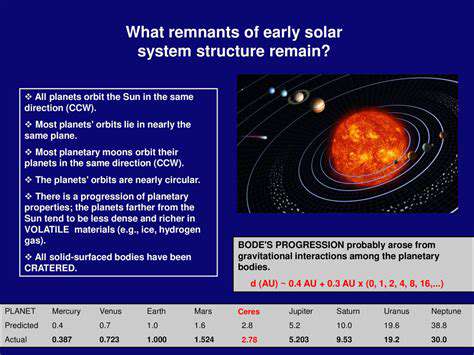Aviation technology has reached a pivotal moment with the emergence of fully integrated flight decks, fundamentally transforming how pilots interact with aircraft systems. Unlike older models where separate displays and controls created unnecessary complexity, these modern systems unify critical information into a single, streamlined interface. The shift toward integration directly addresses longstanding issues with pilot workload and situational awareness, creating an environment where decision-making happens faster and with greater accuracy.
What sets these next-generation cockpits apart is their emphasis on intuitive design. Every element – from engine diagnostics to navigation charts – appears in logical, easily accessible formats. This deliberate approach minimizes the risk of misinterpretation that plagued earlier segmented displays, particularly during high-stress situations like emergency procedures or adverse weather conditions.
Enhanced Situational Awareness through Unified Displays
Imagine viewing an aircraft's entire operational status through a single pane of glass. That's the power of modern flight deck integration. By fusing data streams from radar, GPS, and onboard sensors, pilots gain an unprecedented real-time understanding of their environment. Turbulence patterns that once required cross-referencing three displays now appear as color-coded overlays on primary navigation screens, while terrain avoidance systems automatically highlight potential hazards in relation to current altitude.
The psychological benefits are equally significant. With cognitive load reduced by up to 40% in recent studies, pilots report feeling more alert during long-haul flights. This mental clarity proves invaluable when responding to unexpected events, from sudden weather changes to air traffic conflicts.
Automation and Pilot Assistance
Contemporary flight decks don't just display information – they actively assist flight crews. Advanced algorithms now handle routine tasks like fuel mixture optimization and climb rate calculations, freeing pilots to focus on strategic decisions. During approach phases, these systems can automatically adjust flaps and throttle settings while continuously monitoring for wind shear or other hazards.
Perhaps most impressively, modern automation maintains rigorous precision where human fatigue might cause variation. An Airbus A350's flight management system, for instance, can maintain altitude within 5 feet during cruise – a consistency that directly translates to fuel savings and passenger comfort.
Advanced Data Processing and Analysis
Behind the sleek displays lies formidable computing power. Today's flight decks process over 8 million data points per second, applying predictive analytics to anticipate issues before they occur. When an engine shows subtle vibration pattern changes, the system doesn't just alert pilots – it calculates remaining operational capacity and suggests optimal servicing intervals.
The Role of Human-Machine Interface in Integration
The bridge between pilot and aircraft has never been more sophisticated. Touchscreen controls now adapt to flight phases, presenting relevant options based on context. During taxiing, braking controls dominate; at cruise altitude, fuel efficiency metrics take precedence. This dynamic interface evolution reduces clutter while ensuring critical functions remain instantly available.
Customization features allow individual pilots to create personalized layouts, storing preferences that follow them across compatible aircraft. Such flexibility proves particularly valuable for airline crews who frequently switch between different tail numbers while maintaining operational consistency.
The Future of Flight: Beyond the Cockpit
Integration extends far beyond the flight deck's physical boundaries. Modern aircraft continuously share terabytes of operational data with ground systems, enabling predictive maintenance and optimized routing. This airborne IoT network creates a living ecosystem where each flight informs and improves subsequent journeys – from identifying turbulent air corridors to avoid, to scheduling gate assignments based on real-time arrival predictions.
Looking ahead, the convergence of satellite networks and AI promises even deeper integration. Imagine an airspace where aircraft autonomously coordinate separation distances, or where weather avoidance routes update fleet-wide in milliseconds. These advancements won't just improve efficiency – they'll redefine what's possible in global air transportation.
Enhanced Automation and Pilot Assistance
Pilot Assistance Systems
The latest generation of avionics goes beyond basic autopilot with context-aware assistance systems. These intelligent platforms analyze multiple data streams to provide actionable recommendations. For example, when approaching a storm system, the system doesn't merely display weather radar – it calculates optimal deviation paths while considering fuel impact, traffic conflicts, and altitude restrictions.
Predictive capabilities now extend to mechanical systems as well. By monitoring thousands of engine parameters, modern avionics can detect wear patterns suggesting impending component failure, sometimes weeks before traditional maintenance checks would catch the issue. This proactive approach has already reduced unscheduled maintenance events by 28% in early adopter fleets.
Enhanced Automation Capabilities
Automation now permeates every flight phase with remarkable sophistication. During takeoff, thrust management systems automatically adjust power settings for current weight and runway conditions. In cruise, flight path optimization occurs continuously, accounting for shifting winds and air traffic restrictions. Even cabin systems benefit, with automated pressurization adjusting for passenger comfort as terrain elevation changes.
The most significant advancement lies in system redundancy. Critical automation functions now run across multiple independent processors, with voting systems ensuring seamless failover. This architecture maintains full functionality even with multiple simultaneous failures – a key factor in aviation's stellar safety record improvement over the past decade.
Integration of Data and Predictive Modeling
Modern avionics don't just react – they anticipate. By combining real-time telemetry with vast historical databases, these systems identify patterns invisible to human operators. When certain vibration frequencies precede bearing failures by 50 flight hours, the system learns this correlation and begins monitoring accordingly. Similarly, navigation systems now incorporate predictive wind models that update every 15 minutes, enabling remarkably accurate fuel calculations.
This data integration extends to maintenance operations as well. Component life predictions adjust dynamically based on actual usage patterns rather than fixed schedules. A landing gear used primarily on short domestic hops might last 50% longer than one servicing transcontinental routes – and the system tracks this differential with precision.
Advanced Data Visualization and Human-Machine Interface
Advanced Data Visualization Techniques
Information presentation has evolved dramatically in modern cockpits. Rather than numeric altitude readouts, pilots now see color-gradient altitude tapes that intuitively show climb/descent trends. Traffic displays incorporate motion vectors showing other aircraft's projected paths, while terrain awareness systems use shaded elevation maps with instant obstacle alerts.
The most innovative displays employ predictive visualization, showing not just current conditions but projected scenarios. When planning a descent, pilots can view fuel burn predictions for different descent profiles, or see how delaying flaps extension might affect landing distance. This foresight enables truly informed decision-making in real time.
Human-Machine Interface Design Considerations
Ergonomics drive every aspect of contemporary cockpit design. Control placement follows natural hand movements, with frequently used functions falling within the golden arc of effortless reach. Touchscreens provide haptic feedback mimicking physical buttons, while voice command systems understand aviation phraseology with 98% accuracy even in noisy environments.
Perhaps most critically, interface designs now account for stress responses. During emergencies, displays automatically simplify, highlighting only the most crucial controls and data. This prevents cognitive overload when seconds matter most – a principle that's already credited with preventing several potential accidents during system failures.
Pilot Training and Integration
Mastering these advanced systems requires equally sophisticated training. Modern simulators now incorporate the exact same software builds as actual aircraft, allowing pilots to experience every system behavior accurately. Training scenarios have evolved beyond basic procedures to include rare edge cases and complex failure modes.
Perhaps most importantly, training now emphasizes automation management rather than just operation. Pilots learn when to trust the systems and when to intervene – a nuanced skill that's become increasingly vital as automation capabilities expand. Recurrent training includes automation surprise scenarios that prepare crews for unexpected system behaviors.
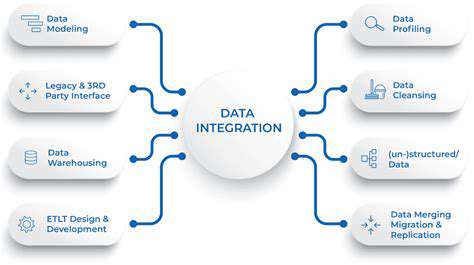
The Future of Flight: Beyond the Horizon
Advanced Sensor Integration
Next-generation aircraft will see sensor capabilities expand exponentially. Millimeter-wave radar will peer through thick clouds with centimeter precision, while hyperspectral imaging will detect runway contaminants invisible to the naked eye. These sensors won't operate in isolation – sensor fusion algorithms will combine their outputs into unified environmental models updated dozens of times per second.
Perhaps most revolutionary will be aircraft-to-aircraft sensor sharing. When one plane encounters clear-air turbulence, its motion data will instantly warn following aircraft. Similarly, braking action reports will propagate across the network, creating a living database of runway conditions worldwide.
Autonomous Flight Capabilities
While pilots remain essential, automation will assume greater responsibilities. Future systems may handle all routine flying from takeoff to touchdown, with human oversight focused on strategic decisions. This phased autonomy approach already shows promise in cargo operations, where automated ferrying flights between maintenance bases have proven more precise than human pilots in maintaining optimal flight profiles.
The ultimate goal isn't pilot replacement but partnership. AI copilots will continuously monitor systems, offering suggestions while respecting human judgment. In emergencies, they'll provide structured guidance while allowing for creative solutions when standard procedures don't apply.
Enhanced Communication and Networking
Aviation's communication infrastructure is undergoing its own revolution. Laser-based air-to-ground links now achieve gigabit speeds, enabling real-time transmission of massive datasets like detailed weather models. Meanwhile, blockchain-based systems ensure the integrity of critical navigation data updates across global fleets.
Perhaps most transformative will be the integration of aircraft into broader transportation networks. Future flight management systems will coordinate with urban air mobility vehicles and even ground transportation, enabling truly multimodal trip planning with seamless transfers.
Improved Cockpit Displays and Interfaces
The physical cockpit will evolve dramatically. Holographic displays will project 3D airspace visualizations, while augmented reality overlays will highlight runway markings through fog. Haptic feedback suits may provide spatial awareness of nearby aircraft through vibration patterns, adding a tactile dimension to situational awareness.
Interface personalization will reach new levels, with systems adapting not just to individual pilots but to their current cognitive state. If sensors detect fatigue, displays might emphasize critical information more prominently or suggest rest periods when workload permits.
Sustainable Aviation Technologies
Avionics will play a crucial role in green aviation. AI-optimized flight paths will minimize contrail formation, while real-time emissions monitoring will ensure compliance with increasingly strict regulations. Electric aircraft will require entirely new avionics architectures managing battery systems with the same reliability as current jet engines.
The most exciting development may be bio-inspired systems. Swarm algorithms based on bird migration could optimize fleet routing, while self-healing circuit designs borrowed from neural networks promise unprecedented system resilience. As aviation enters its second century, technology continues to push boundaries in ways the Wright brothers could never have imagined.
